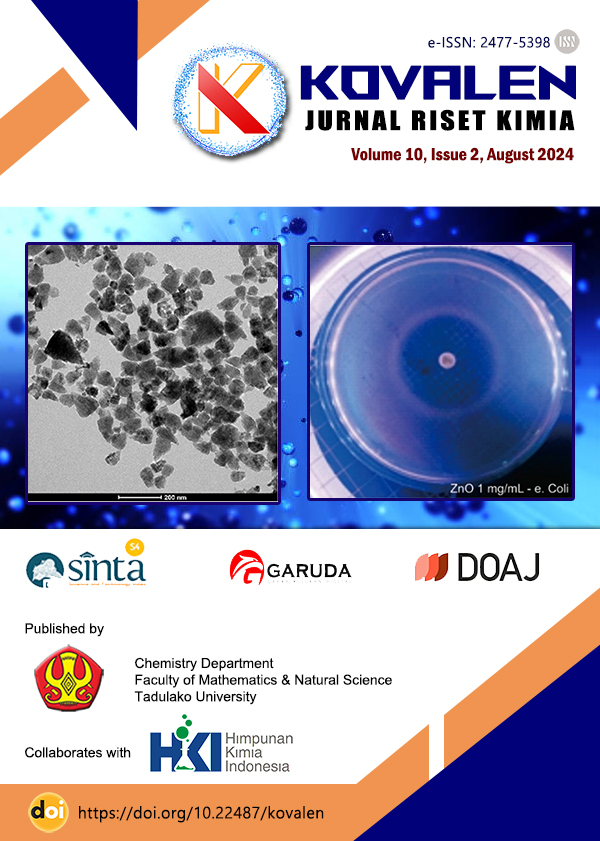Main Article Content
Abstract
Grasshoppers are insects that are pests for agriculture. In recent years, humans have begun to realize the broader economic value of insects, which are not only used as animal feed but also as sustainable biopolymers, such as chitin and chitosan. Grasshoppers' body organs contain chitin, including the digestive tract (intestine), trachea system, and exoskeleton (outer skeleton). Currently, the chitin extraction process using the green method with Deep Eutectic Solvent (DES) is more popular because it reduces the use of dangerous chemicals, reduces waste, and is overall more environmentally friendly than using chemical and biological methods. In the chitin extraction process, process parameters, such as reaction time, temperature, and particle size of the raw material, are adjusted to obtain the desired properties of chitin. This research aims to determine the effect of particle size and temperature on chitin yield and degree of acetylation (DA). The research results show that the yield values ​​and DA values ​​produced in this research are not by similar references which have described the characteristics of chitin. However, there is one sample showing that the most optimal DA value is the BSC 7 150 mesh 90°C sample, at wavelengths of 1560 cm-1 and 2875 cm-1, producing a DA value of 55.79514% and DD 44.20485933%. The best yield value was BSC 2 110°C 50 mesh, with a value of 22.1%.

